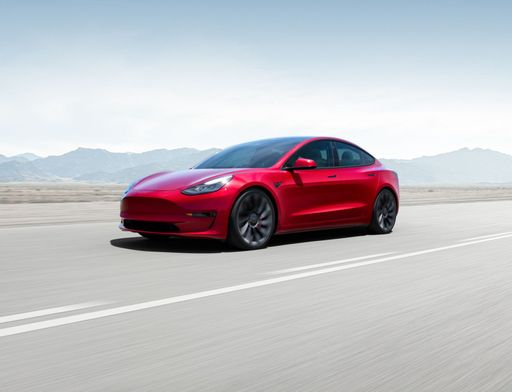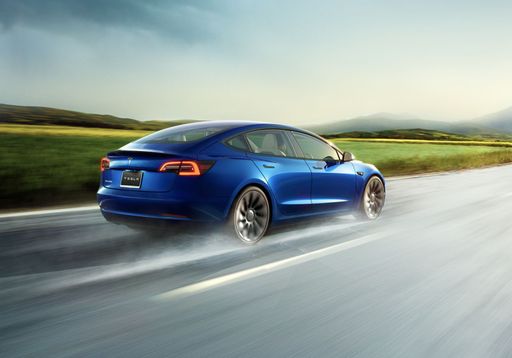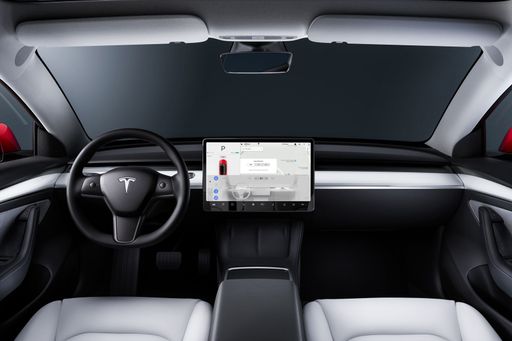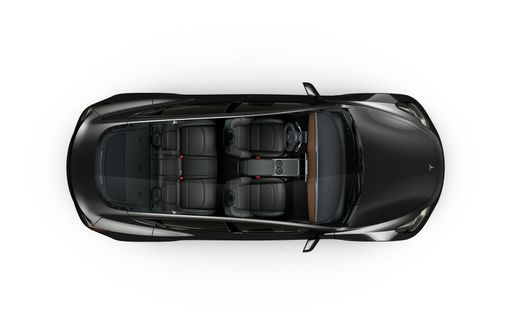Toyota Mirai vs Tesla Model 3 – Which model is better for everyday use?
Costs and Efficiency:
Looking at overall running costs, both models reveal some interesting differences in everyday economy.
Tesla Model 3 has a convincingly advantage in terms of price – it starts at 34300 £, while the Toyota Mirai costs 58700 £. That’s a price difference of around 24428 £.
As for range, the Tesla Model 3 performs slightly better – achieving up to 750 km, about 100 km more than the Toyota Mirai.
Engine and Performance:
Power, torque and acceleration are the classic benchmarks for car enthusiasts – and here, some clear differences start to show.
When it comes to engine power, the Tesla Model 3 has a decisively edge – offering 460 HP compared to 182 HP. That’s roughly 278 HP more horsepower.
In acceleration from 0 to 100 km/h, the Tesla Model 3 is significantly quicker – completing the sprint in 3.10 s, while the Toyota Mirai takes 9.20 s. That’s about 6.10 s faster.
In terms of top speed, the Tesla Model 3 performs clearly perceptible better – reaching 262 km/h, while the Toyota Mirai tops out at 175 km/h. The difference is around 87 km/h.
There’s also a difference in torque: Tesla Model 3 pulls convincingly stronger with 660 Nm compared to 300 Nm. That’s about 360 Nm difference.
Space and Everyday Use:
Cabin size, boot volume and payload all play a role in everyday practicality. Here, comfort and flexibility make the difference.
Both vehicles offer seating for 5 people.
In curb weight, Tesla Model 3 is hardly perceptible lighter – 1822 kg compared to 1900 kg. The difference is around 78 kg.
In terms of boot space, the Tesla Model 3 offers clearly more room – 594 L compared to 300 L. That’s a difference of about 294 L.
When it comes to payload, Toyota Mirai noticeable takes the win – 515 kg compared to 333 kg. That’s a difference of about 182 kg.
Who comes out on top?
Overall, the Tesla Model 3 shows itself to be dominates this comparison and secures the title of DriveDuel Champion.
It convinces with the more balanced overall package and proves to be the more versatile choice for everyday use.
Costs and Consumption
View detailed analysis
Engine and Performance
View detailed analysis
Dimensions and Body
View detailed analysis
 @ Tesla, Inc.
@ Tesla, Inc.
Tesla Model 3
Toyota Mirai
The Toyota Mirai arrives as a bold, futuristic saloon that turns heads with sleek, almost sci‑fi styling and a cabin that feels more lounge than cockpit. It trades petrol fuss for a whisper‑quiet hydrogen setup that delivers composed, effortless progress and makes long-distance cruising a relaxed pleasure — a compelling choice if you want cutting-edge eco tech without sacrificing comfort.
details @ Toyota Motor Corporation
@ Toyota Motor Corporation
Tesla Model 3
The Tesla Model 3 slices through daily commuting with a silent, confident shove that makes petrolheads reassess their life choices, while its minimalist cabin feels more like a slick gadget gallery than a traditional car interior. For buyers after a fuss-free, tech-forward electric with plenty of grin factor and low running drama, it’s hard to beat—just don't be surprised when the car updates itself overnight.
details @ Tesla, Inc.
@ Tesla, Inc.
 @ Tesla, Inc.
@ Tesla, Inc.
 @ Tesla, Inc.
@ Tesla, Inc.
 @ Tesla, Inc.
@ Tesla, Inc.
 @ Toyota Motor Corporation
@ Toyota Motor Corporation
|
 @ Tesla, Inc.
@ Tesla, Inc.
|
|
|
|
Costs and Consumption |
|
|---|---|
|
Price
58700 - 66700 £
|
Price
34300 - 50100 £
|
|
Consumption L/100km
-
|
Consumption L/100km
-
|
|
Consumption kWh/100km
-
|
Consumption kWh/100km
13.2 - 16.7 kWh
|
|
Electric Range
650 km
|
Electric Range
550 - 750 km
|
|
Battery Capacity
-
|
Battery Capacity
64.5 - 83 kWh
|
|
co2
-
|
co2
0 g/km
|
|
Fuel tank capacity
5 L
|
Fuel tank capacity
-
|
Dimensions and Body |
|
|---|---|
|
Body Type
Sedan
|
Body Type
Sedan
|
|
Seats
5
|
Seats
5
|
|
Doors
4
|
Doors
4
|
|
Curb weight
1900 - 1930 kg
|
Curb weight
1822 - 1929 kg
|
|
Trunk capacity
300 L
|
Trunk capacity
594 L
|
|
Length
4975 mm
|
Length
4720 - 4724 mm
|
|
Width
1885 mm
|
Width
1850 mm
|
|
Height
1470 mm
|
Height
1431 - 1440 mm
|
|
Max trunk capacity
-
|
Max trunk capacity
-
|
|
Payload
485 - 515 kg
|
Payload
303 - 333 kg
|
Engine and Performance |
|
|---|---|
|
Engine Type
Hydrogen
|
Engine Type
Electric
|
|
Transmission
Automatic
|
Transmission
Automatic
|
|
Transmission Detail
Reduction Gearbox
|
Transmission Detail
Reduction Gearbox
|
|
Drive Type
Rear-Wheel Drive
|
Drive Type
Rear-Wheel Drive, All-Wheel Drive
|
|
Power HP
182 HP
|
Power HP
283 - 460 HP
|
|
Acceleration 0-100km/h
9.20 s
|
Acceleration 0-100km/h
3.1 - 6.1 s
|
|
Max Speed
175 km/h
|
Max Speed
201 - 262 km/h
|
|
Torque
300 Nm
|
Torque
420 - 660 Nm
|
|
Number of Cylinders
-
|
Number of Cylinders
-
|
|
Power kW
134 kW
|
Power kW
208 - 338 kW
|
|
Engine capacity
-
|
Engine capacity
-
|
General |
|
|---|---|
|
Model Year
2021 - 2022
|
Model Year
2025
|
|
CO2 Efficiency Class
-
|
CO2 Efficiency Class
A
|
|
Brand
Toyota
|
Brand
Tesla
|
What drive types are available for the Toyota Mirai?
Available configurations include Rear-Wheel Drive.
The prices and data displayed are estimates based on German list prices and may vary by country. This information is not legally binding.
